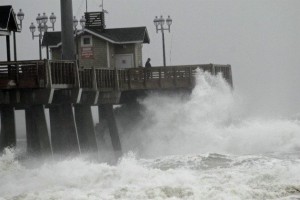We are literally hours away from Hurricane Sandy hitting the most populated area of the United States. 50 million people are affected. It’s packing winds of 90 mph. Power has been knocked out already to half a million customers by mid-day Monday. Rainfall will between 5-8 inches over a 48 hour period. Obama was quoted as saying, “Please listen to what your state and local officials are saying. When they tell you to evacuate, you need to evacuate. Don’t delay, don’t pause, don’t question the instructions that are being given, because this is a powerful storm.”
Business and individuals sometimes become addicted to the urgent. We fight fires. We run from one crisis to another. How do we manage our lives and make crisis more manageable. Any discretionary time that you have, spend it on anticipating problems and prevention.
Let me give you a real example. Years ago, I was facilitating an anticipating problems and prevention session for a group of Johnson & Johnson packaging engineers. The company had an iodine scrub. We examined the things that could possibly go wrong from a packaging perspective. We then examined the probability of each problem occurring. We then examined the severity of each occurrence. When doing risk assessment or risk management, probability multiplied by severity helps identify the high risk areas. In this case, the highest packaging risks included:
1. The cap might be over torqued cracking the bottle and producing leaks during shipping.
2. The cap might be under torqued and fall off causing leakage during shipping.
In risk management, The two important areas of focus include prevention and containment. Double hulled oil tankers are designed to prevent oil spills. Oil boons are designed to contain oil in the event of a spill. In the iodine scrub example, the packaging engineers decided not to consider packaging suppliers who could not monitor cap torque as a prevention strategy. In other words, packaging suppliers were required to monitor cap torque. They decided to line each shipping box with plastic as a containment strategy.
Here is a list of things to do before a hurricane hits provided by the ready.gov site.
Before a Hurricane
Build an emergency kit and make a family communications plan.
Know your surroundings.
Learn the elevation level of your property and whether the land is flood-prone. This will help you know how your property will be affected when storm surge or tidal flooding are in the forecast.
Identify levees and dams in your area and determine whether they pose a hazard to you.
Learn community hurricane evacuation routes and how to find higher ground. Determine where you would go and how you would get there if you needed to evacuate.
Make plans to secure your property.
Cover all of your home’s windows. Permanent storm shutters offer the best protection for windows. A second option is to board up windows with 5/8” marine plywood, cut to fit and ready to install. Tape does not prevent windows from breaking.
Install straps or additional clips to securely fasten your roof to the frame structure. This will reduce roof damage.
Be sure trees and shrubs around your home are well trimmed so they are more wind resistant.
Clear loose and clogged rain gutters and downspouts.
Reinforce your garage doors; if wind enters a garage it can cause dangerous and expensive structural damage.
Plan to bring in all outdoor furniture, decorations, garbage cans and anything else that is not tied down.
Determine how and where to secure your boat.
Install a generator for emergencies.
If in a high-rise building, be prepared to take shelter on or below the 10th floor.
Consider building a safe room.
Here are some that I’m adding. Make sure that all electronic devices are charged. Have plenty of water and canned goods in your home.
Here is a list of safety tips before, during, and after the storm.
Our prayers go out to all those affected by hurricane Sandy. May God protect you during this dangerous time.




 Facebook
Facebook Twitter
Twitter Youtube
Youtube GooglePlus
GooglePlus LinkedIn
LinkedIn